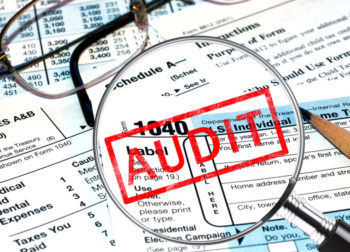 The national debt is increased each fiscal year when the annual deficit of government spending over government revenue is added onto the existing debt. The deficit in 2024 was $1.8 trillion. In addition to the budget deficit raising the debt, the interest rate on the debt may also be partially added, depending on the rate. Currently, the national debt stands at $36.7 trillion. (Different sources calculate the debt slightly differently) In fiscal year 2024, the government spent $6.75 trillion. This was more than it collected in revenue, adding to the national debt. Interest on the national debt was 14 percent of total expenditure, the second highest item, exceeded only by Social Security at 22 percent. The U.S. spent more on interest than it did on national defense.
The national debt is increased each fiscal year when the annual deficit of government spending over government revenue is added onto the existing debt. The deficit in 2024 was $1.8 trillion. In addition to the budget deficit raising the debt, the interest rate on the debt may also be partially added, depending on the rate. Currently, the national debt stands at $36.7 trillion. (Different sources calculate the debt slightly differently) In fiscal year 2024, the government spent $6.75 trillion. This was more than it collected in revenue, adding to the national debt. Interest on the national debt was 14 percent of total expenditure, the second highest item, exceeded only by Social Security at 22 percent. The U.S. spent more on interest than it did on national defense.
Our national debt keeps rising and Republicans refuse to deal with the problem in a rational fashion, considering various gimmicks. The answer of how to reduce the debt and ultimately completely control it is staring GOP Congressmen and Senators in the face. But they refuse to consider the answer. Taxes must be raised on the ultra-wealthy and we should not take on additional debt. After World War II our national debt was $258 billion, a huge amount at that time. This can be seen by the GDP to national debt ratio which was 113 percent in 1946. (Prior to World War II, the national debt was $51 billion in 1940.)
Through high marginal tax rates and economic growth, the U.S. gradually lowered its debt after the war, the GDP to national debt ratio reaching 23 percent in 1974. The economic growth rate exceeded the interest rate on the debt allowing the debt to be paid off. But high marginal tax rates also played a role, with tax revenue exceeding government spending. Corporate taxes increased from 19 percent to 33 percent in 1940. In 1944, during the midst of the war, the top income tax rate was 94 percent on taxable income over $200,000- equivalent to $2.5 million in today’s dollars.
During the 1950s, 60s and 70s, the marginal tax rates remained high, never falling below 70 percent. And during this period our national debt was under good control. In 1981 under the Reagan administration, the Economic Recovery Tax Act lowered the highest rate to 50 percent with tax brackets indexed for inflation. In 1986, further tax reform by Congress lowered the highest rate to 28 percent and broadened the tax base. The marginal rate was raised again during the 1990s to 39.6 percent, cut to 35 percent in 2001. The top rate was bumped up again in 2012 to 39.6 percent with the addition of 3.8 percent for the Patient Protection and Affordable Care Act, making the effective maximum federal income tax 43.4 percent. In 2018, the maximum federal income tax rate was lowered to 37 percent with the additional charge of 3.8 percent remaining, the effective top tax being 40.8 percent. The highest marginal tax rate currently is applied to income over $609,351.
At the end of 2024, the national debt to GDP ratio was 121.85 percent according to the Federal Reserve Bank of St. Louis, the second highest ever. Our debt rating has already been lowered by the three major rating agencies from the best status to just below by all the agencies. This means that the chances we might default on our debt has gone up, resulting in higher interest rates to keep our debt salable. While 70 percent of our debt is held by our own financial actors and institutions, the remainder is held by foreign banks and institutions, including China. If they were to sell our debt and demand immediate repayment, it could be disastrous for our economy. As it is, interest on our national debt is the second highest item in our annual budget.
Congress must bite the bullet and take the only path that makes sense. Raise the tax rates on the ultra-wealthy. As an example, anyone making over $5 million in income might pay 50 percent marginal taxes, over 10 million 60 percent, over 20 million 70 percent. And the affluent individuals making money in the U.S. wouldn’t be able to claim residence in a low tax country or use other tax evasion schemes. Also, Trump said he would make carried interest from stockbrokers taxable. Somehow, that got lost in that “big, beautiful bill” of his. In addition, all the fired IRS personnel would have to be rehired and perhaps more added to carefully evaluate tax returns. By increasing taxes on the ultra-wealthy, taxes could likely be reduced on those with low incomes. But Trump and the Republicans don’t want to do what’s right for their base and all of America. Their actions would increase the national debt further.
www.robertlevinebooks.com
Buy The Uninformed Voter on Amazon, Barnes and Noble, or at your local bookstore
Posted at 08:54 AM | Permalink | Comments (0)
Tags: annual deficit, beautiful bill, big, carried interest, Congress, interest on debt, national debt, President Trump, tax on ultra-rich
Political junkie, Vietnam vet, neurologist- three books on aging and dementia. Book on health care reform in 2009- Shock Therapy for the American Health Care System. Book on the need for a centrist third party- Resurrecting Democracy- A Citizen’s Call for a Centrist Third Party published in 2011. Aging Wisely, published in August 2014 by Rowman and Littlefield. Latest book- The Uninformed Voter published May 2020
















